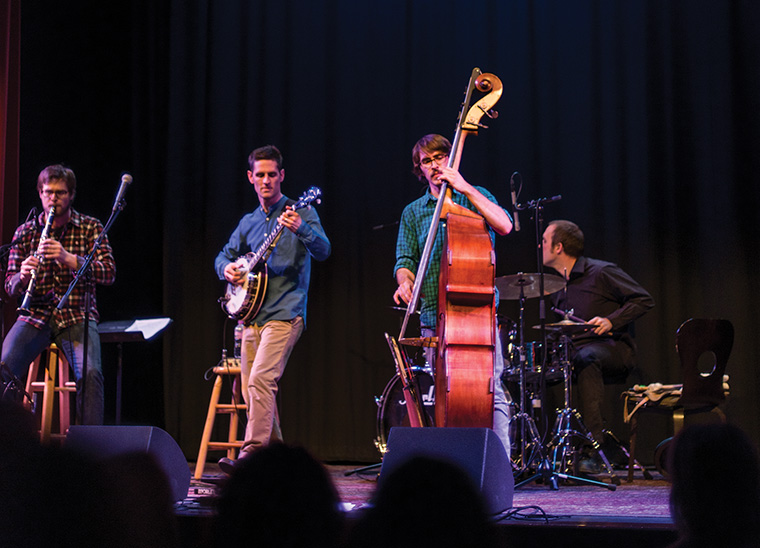Canadian banjoist brings folk to Chicago
Andrew Small (middle) studied music at Yale University and is now touring with Jayme Stone.
March 3, 2014
Jayme Stone is proof there is still a place for traditional folk music in the modern world. Although it is encouraging that folk has found its way into pop music with the help of bands like Mumford & Sons, the culturally rich traditional art form should not be ignored. Jayme Stone’s Feb. 26 performance at Old Town School of Folk Music, 4544 N. Lincoln Ave., was a learning experience for folk newbies and enjoyable to its aficionados.
A part of World Music Wednesdays, a free event hosted every Wednesday night through Aug. 6, Jayme Stone and his accompanying trio took the stage with humble confidence. The formal, concert hall audience was composed of mostly white-haired men and women laughing at Stone’s jokes while drinking beer in an intimate space. However, the majority of the audience, some of the men in the group looked to be considerably younger because of their plaid shirts, tight jeans and full heads of hair.
The group, which includes banjoist Stone, wind player Rob Mosher, upright bassist Andrew Small and drummer Nick Fraser, have all studied folk music at universities. Frontman and award winning banjoist, Stone began his career in 2007.
His latest album The Other Side of Air is an all-instrumental folk album primarily influenced by his travels and life as a new parent. The songs feature his banjo but highlights bass, drums and wind instruments as well with musically complex solos and duets.
Playing both original compositions and covers of timeless folk tunes, the group had a distinct, fast-paced style and enthusiasm. A bittersweet mix of dark tones, upbeat rhythms and emotional subtlety placed the audience by a crackling campfire in the woods. Smiles shone through the darkness in the small room, beaming from the faces of the crowd.
In the tradition of folk greats such as Peter Seeger, Stone told powerful stories for each song before he started. Stone joked with the audience to keep the show from becoming too serious. Before playing a foreign traditional dance song, Stone said, with a tongue-in-cheek attitude, “There’s plenty of room up here if anyone remembers the popular Bulgarian dance to this song.”
Although Stone was the only one who talked directly to the audience, the joy of playing music was not lost on the smiling, shaggy-haired wind-player Mosher and bassist, Small. The group began each song in its
traditional form, but quickly changed the tone to reflect the individual sound of the group. These men are formally trained in their respective instruments and know how to transcend the binds of playing traditional music while still paying homage to it.
Fraser’s optimism, however, became almost uncomfortable for the audience during his seemingly endless, indulgent drum solo. Eyes closed and mouth slightly open, he passionately hit the drums, making it feel like the audience was intruding on a personal moment. Emotion-filled sets are touching, but Fraser was getting a little too into it.
Though each song lasted at least six minutes, the songs’ rich backstories and the group’s energetic, collective improvisation made each performance enjoyable.








